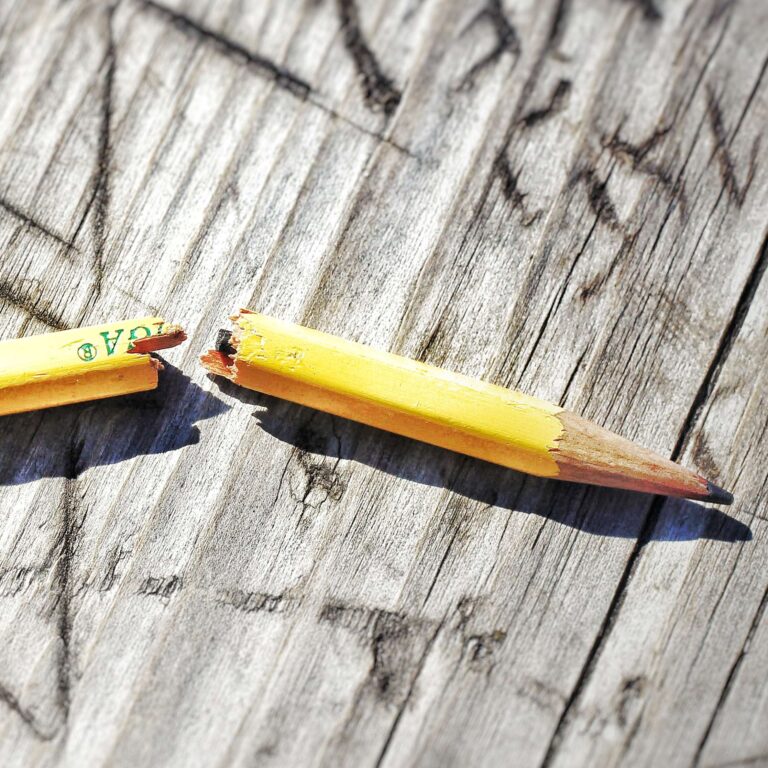There are certain personality types you will come across while teaching art. One is the perfectionist. Sometimes spotting a perfectionist is obvious but other times it’s not. Perfectionism may take the form of a student who fills your trash with beautiful work because nothing he or she creates ever feels “good enough.” It may be a student who erases to the point of creating a hole in their paper. It may even be the student who is slow to start a project, who can’t quite pick the right idea and get to work like the rest of the class. Perfectionism may also be the reason a student needs your approval all the time. Perfectionism may lead some students never to finish their work. It also may take the form of a student who is never satisfied with their art. He or she will leave it in your classroom or toss it in the garbage can. Perfectionism can also cause a student to procrastinate on their projects.
How do you get these types of students to set aside their perfectionist tendencies and balance their time and workload better? We know that research shows that perfectionism hampers success. In fact, perfectionism at its worst can lead to depression and anxiety. Sometimes the perfectionists in our art classes have lost the joy that artmaking should bring.
Some sayings to use with those perfectionists
Done is better than perfect.
― Scott Allen
“One of the basic rules of the universe is that nothing is perfect. Perfection simply doesn’t exist…..Without imperfection, neither you nor I would exist”
― Stephen Hawking
The 80-20 rule, also known as the Pareto Principle, is a familiar saying that asserts that 80% of outcomes (or outputs) result from 20% of all causes (or inputs) for any given event. In business, a goal of the 80-20 rule is to identify inputs that are potentially the most productive and make them the priority.
Have no fear of perfection – you’ll never reach it.
―Salvador Dali
“Don’t let Perfect become the enemy of Good.”
―Voltaire?
Exercises for the perfectionist:
- Try to have the student work abstractly.
- Blind Contour drawing can be a good experience for perfectionists. It can free them up from the expectations of drawing realistic and give them appreciation
- Have students use a wide variety of media and use it in unexpected ways. Splatter paint, make watercolor marker bleed, finger paint, scribble, etc.
- Have the student work with their non-dominant hand.
- Watercolor Resist Paintings. Use a white oil pastel or crayon and draw an image on white watercolor paper. It’s hard to be a perfectionist with a drawing you can’t even see yet!
- Research intuitive painting where students respond to the process rather than the end product.
- Gesture drawing! Students can try mark-making with a long stick attached to help break them away from being so up close and perfectionistic with their work.
- Leave artwork purposefully incomplete. Look at Adrian Brandon’s “Stolen” series, dedicated to Black people that were robbed of their lives at the hands of police. Or Alice Neal’s unfinished portrait of James Hunter.
- Collage! Check out this video.
Other Things to consider
- Set a rule for no negative talk like, “I can’t do this.” Change their choice of words to “I need help” or “I can’t do this yet.”
- Consider reducing the size of the student’s work.
- Expose them to a wide variety of art, art history, and media. Show them Chuck Close’s work. He started tight and had to figure out a way to work differently when he was paralyzed.
- Explore media. Some media works up faster or is more “spontaneous” in nature.
- Read the book Art & Fear: Observations On the Perils (and Rewards) of Artmaking by David Bayles and have students read sections that help provide insights to student help overcoming their perfectionism.
- Use this video called “Finished not Perfect.”
- Finished is not always the goal, maybe a student can aim for beautifully unfinished. Could be a style. See Cristina Troufa’s artwork.
- Sometimes it’s OK to indulge the perfectionism. Just like some students have IEPs which allow extra time for a student, why can’t we accommodate a student who works slowly and fastidiously? Often their finished projects show advanced skill levels. There are some fields, like graphic design, where this attention to detail and precision is needed. So, it’s not always a bad thing.
- Check out this article How to draw & paint faster: 15 tips for high school Art students.




